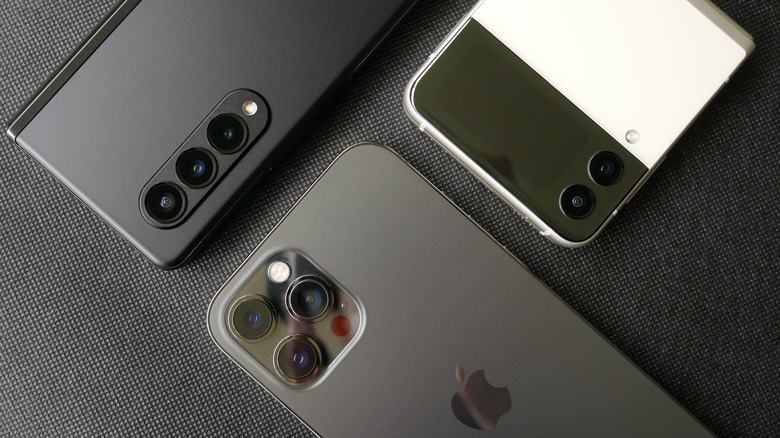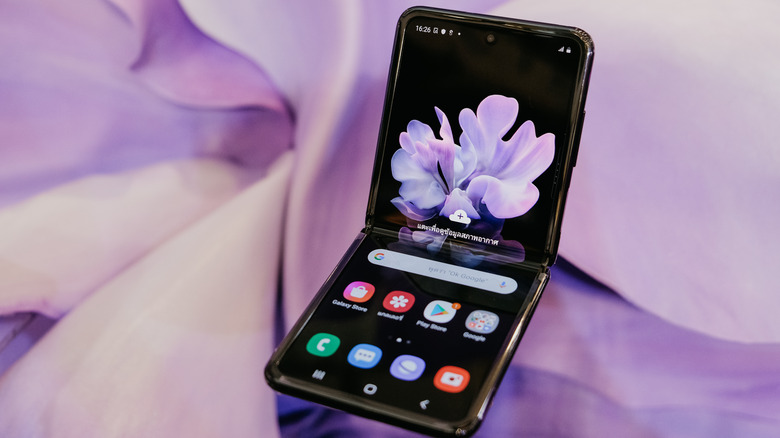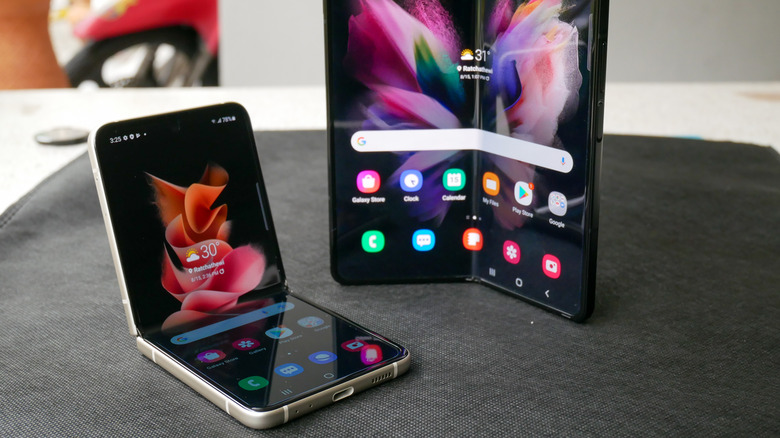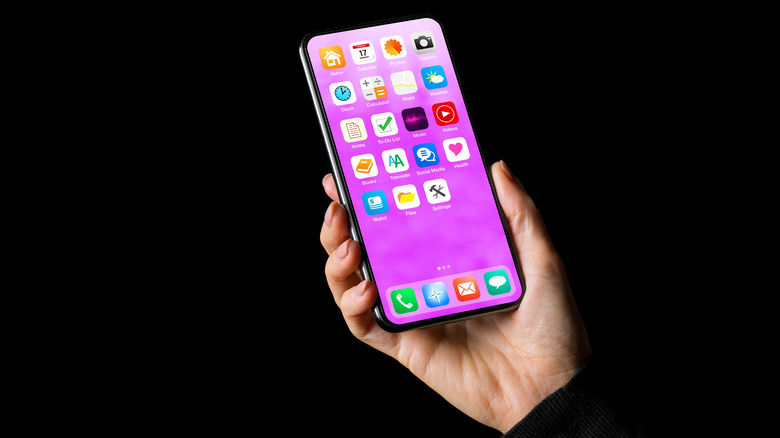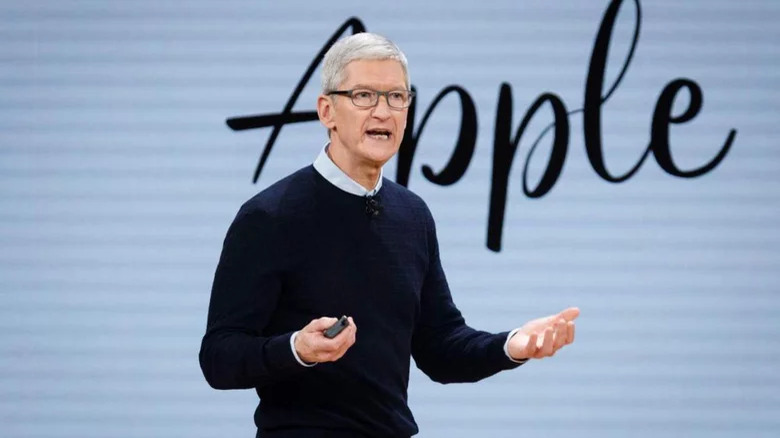iPhone Flip: Features We'd Want To See In Apple's Foldable iPhone
We may receive a commission on purchases made from links.
It's not a secret that Apple is working on a foldable phone. Evidence that we've seen so far includes Apple patent applications along with tips from reliable sources including renowned analyst Ming-Chi Kuo and emerging display analyst, Ross Young. Supply chain sources have also tipped that Apple has been supplied foldable OLED panels by Samsung for testing. Of course, Apple experiments with lots of different products and designs, as the Interaction Design Foundation notes, but that does not guarantee the company will release one.
One thing that pundits are quite sure of now is that if we do see a foldable iPhone from Apple, it will be a "flip style" model like the Samsung Galaxy Z Flip series. According to MacRumors, Apple is rumored to have already tested and abandoned the idea of a smartphone-tablet hybrid like the Samsung Galaxy Z Fold series.
Apple sees the flip-style phone as being something that is more likely to appeal to a wider audience, perhaps in a similar way to the classic flip phones like the original Motorola Razr. However, Apple often likes to play a "wait and see" game when it comes to adopting new form factors, so we may not see this drop until 2024.
If and when it does come, these are the features we'd like to see.
Durability
The top feature that we'd want to see in Apple's iPhone Flip is durability. Before Samsung botched the launch of the original Galaxy Fold, there were already question marks over the durability of foldable phones. These concerns were furthered when Samsung had to postpone its plans for the Galaxy Fold launch after multiple reviewers had major issues with its soft plastic foldable OLED display, The Verge reported.
Samsung went back to the drawing board and launched an improved product, TechCrunch notes. But the Galaxy Ford is still a highly vulnerable device that has dented consumer confidence in foldables. It was still prone to dust ingression and was far from water-resistant. Samsung has significantly improved its foldable designs since then, introducing innovations like ultra-thin glass and water resistance. Durability is said to be a key concern for Apple, a top data analyst tweeted, with its current foldable prototypes, so expect the Apple iPhone Flip to step things up another level in this regard.
Design
Apple has a well-earned reputation for its industrial designs and we would expect Apple to deliver something that really stands out at the high-end in this segment. Samsung's Galaxy Z Flip 3 is the slickest looking flip-style foldable on the market with a secondary display. Samsung has even ramped things up a little in select markets by offering a bespoke design studio for Flip 3 customers to tailor its phone to individual tastes by mixing and matching colors.
There are a few iPhone Flip foldable concepts circulating on the internet, via Tom's Guide, that show a premium iPhone Pro-like camera array combined with a rear secondary display for showing notifications when the device is closed. Apple would be wise to include a pro-level camera set up to differentiate itself from Samsung's offerings, which while good, aren't at premium flagship level. The secondary display also needs to be always-on to be really useful, although Apple still hasn't added an always-on feature to its current flagship iPhones.
Optimized user interface
Analyst Ming-Chi Kuo has reported that the iPhone Flip could have a screen as large as 8 inches. This could suggest Apple sees the foldable flip-style form factor permitting the use of a screen larger than it might with a regular-format phone.
Even if it does use a smaller display, Samsung has shown with the Galaxy Z Flip 3 that flip-style foldables have a natural affinity for multitasking with the top half of the display used for one app and the bottom half filled with another. It also offers opportunities for imaginative control schemes on the bottom half of the screen in single-app use.
Apple has led the way with optimizing its mobile operating systems for smartphones, tablets, and smartwatches. We expect it to lead the way in optimizing its OS for foldable, too. If Apple does indeed opt for a larger display for the iPhone Flip, that only opens up the possibilities even further.
Folding it all together
Apple isn't always the first to the party when it comes to launching products in new categories. For example, smartwatches had been around for several years before Apple finally released the Apple Watch in 2015, according to The Verge.
Apple took the time to study the features people liked and used in smartwatches before correctly identifying that giving the device a fitness focus would give it the necessary utility. As CNET noted, Apple has gone on to dominate the smartwatch segment and currently controlled 55% of the global market as of 2020.
You can bet that Apple is carefully watching the foldable smartphone segment. Despite much hype, foldable phones haven't really set the market on fire with Samsung originally targeting a maximum of 6 million foldable sales for 2021. While we have recently seen some new options launch like the Oppo Find N, there aren't many on the market and many are at high price points.
Counterpoint Research forecasts foldable sales to see a 10x increase in sales in 2023 which should help to increase general consumer awareness of the category. In the meantime, foldable technology will continue to improve which could lay the foundation for the rumored 2023 or 2024 launch of the iPhone Flip.
